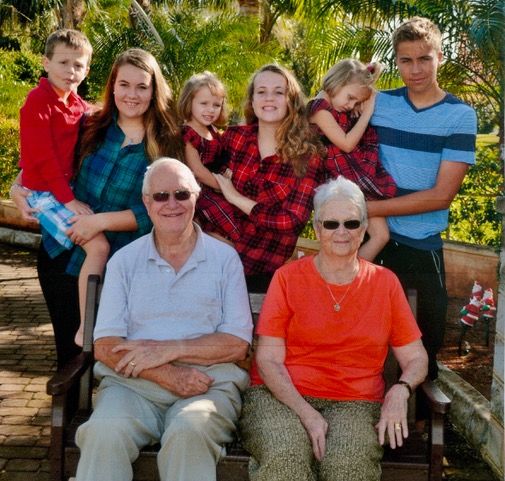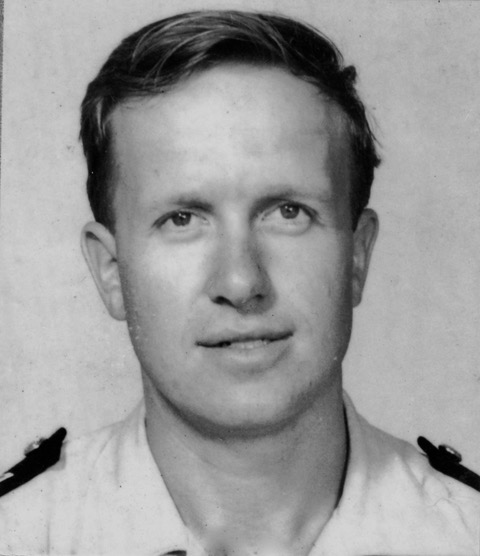
I was born and raised at Shepherds Hill Lodge Farm near Wellaston, Northamptonshire, a fairly large cereal farm, growing crops for food and raising cattle. My parents were Horace and Winifred Cherry. Our nearest neighbours were about a mile away so pedal cycling and walking played a large part in my upbringing having to travel to the village to school and in order to catch the bus to town or to Wellingborough Grammar School after I left primary school.
I was introduced to horses at a very young age as they were still being used for work during the war years and indeed after. We had up to four or five horses on the farm during the War because there was no fuel avalable for ploughing. The photograph below is of myself, aged about 18 months, and my two older sisters, Rosemary (aged 4) and June (aged 8) on our carthorse "Short". This experience stood me in good stead later in life when I became involved with the Bermuda Equestrian Federation, although I never did take up riding!
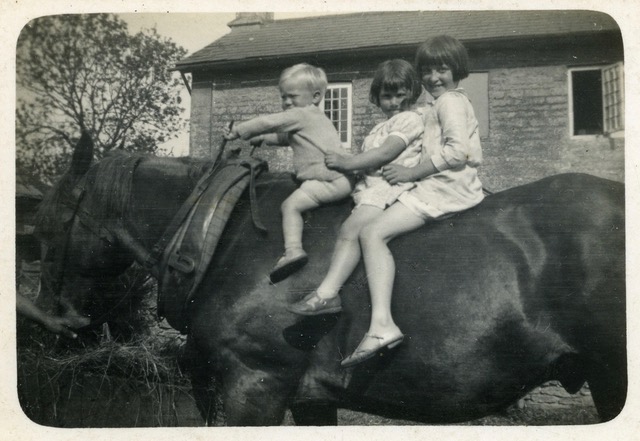

My Police Service career started in the Spring of 1954 when armed with a number of GCE O levels, obtained at my local grammar school, I decided that I did not want to spend the time studying for 'A levels', and the prospect of a college or university life after that did not appeal to me either. So I applied for and was accepted into the newly formed cadet scheme of the Northamptonshire County Constabulary in 1954.
I should mention that Wellingborough Grammar School was renowned for producing high level rugby players and had a number of England international players amongst its staff over the years. The school also produced the youngest player ever to wear on England shirt in the form of John Hyde who represented his country at the age of eighteen when still at school. A feat not to be repeated in this age of professionalism.
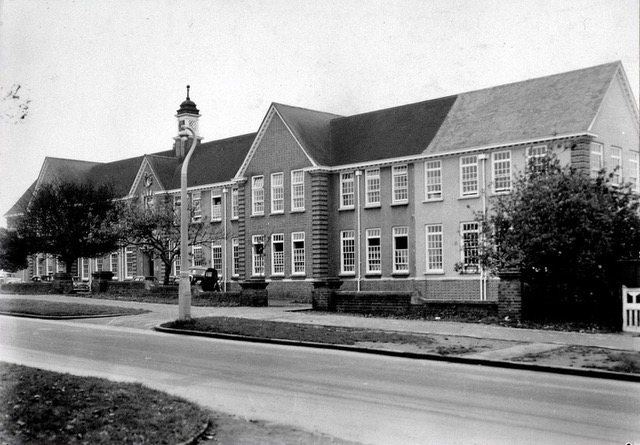
At the age of sixteen I was quickly thrown into an adult world which my rural upbringing on a farm miles from the nearest town hardly prepared me for, especially as the town to which I was posted was responsible for the large United States Air Force Base located nearby with all of it’s attendant problems most of which appeared to be of a nature completely alien to a comparatively innocent farm boy.
Fortunately I was reasonably good at Rugby at school reaching the dizzy heights of the second XV on the wing, but quickly being transformed into a centre for the police county team. What a transition that was with games both home and away seemingly starting and ending at the local hostelry, but as I was under the legal age and my team mates having to set a good example I was usually left outside with a Britvic orange juice.
As all of the police games were played mid week in consort with other Police teams and various military teams I generally was able to play at the weekend as well for the town team.
A year later with the advent of National Service possibly coming to an end I decided to avoid any disruption later in life, in case the government of the day changed it’s mind and decided not to abolish conscription after all. I responded to the call to fight for my country. Not wishing to be type cast as a career policeman and being drafted into the Military Police “red caps” I applied for the Royal Air Force again avoiding the RAF Police “snow drops”, both units being recognized by the colours of the cap tops.
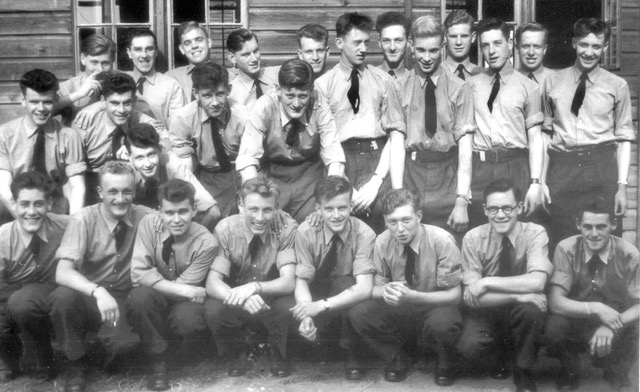
After the customary three months of “square bashing” at RAF Hednesford in Staffordshire in 1955 the authorities decided that I would possibly make a good radar mechanic so off I went on another three months course again being thrust into a brand new world alien to me, but which did serve to broaden my education in the field of electronics. A period of time at an RAF base was followed by another three month course in electronics in order to bring me up to date with the age of the Vulcan bomber aircraft which were the main deterrents in the “Cold War” period of uncertainty. The Suez Canal Crisis of Anthony Eden fame was another ripple of uncertainty for which we were on standby, but I was not required to venture any further than the wilds of Lincolnshire and Wiltshire in England.
But it was not all study and work and again rugby provided an outlet for pent up energy. One of the highlights of my rugby playing at that time was the opportunity to play on a team with an England international, Peter Yarranton a regular in the second row and who also captained the RAF team. I had by that time been converted into a scrum half as my comparatively small stature did not suit the centre position. The training camp had four teams with the first and third teams traveling away whilst the second and fourth teams played at home on alternating weeks. One week I as a regular member of the third team and traveling on the coach with the first fifteen arrived at the away game venue to learn that the first fifteen scrum half had injured himself getting out of the coach and I was mortified to learn of my rapid promotion to take his place. Naturally I was kept very busy as Ft Lt Yarranton won every line out, but that game was my only claim to fame. I was a little disappointed when a number of years later Peter came to Bermuda as a member of the touring Penguins Rugby Club but he failed to remember my contribution to his success when I reminded him about it.
Another close call to fame whilst at the same training camp was training on the same running track as sub four minute miler Derek Ibbotson who did four laps of the track while the rest of us were doing three.
A piece of sports trivia for the next pub quiz night is; “Who was the first person to run a four minute mile?” No not Roger Bannister as he ran under four minutes, whilst Derek was clocked in exactly four minutes some four year later. But I digress!!!
After two worthwhile years in the RAF I decided to return to Civvy Street but after a few months of odd jobbing, interspersed by time touring the Continent on my BSA motorcycle and helping out on the farm where I had been brought up, I decided to return to uniform. Prior to this however I was featured in an advert in the “Motor Cycle” magazine a weekly publication for motor cycle enthusiasts.
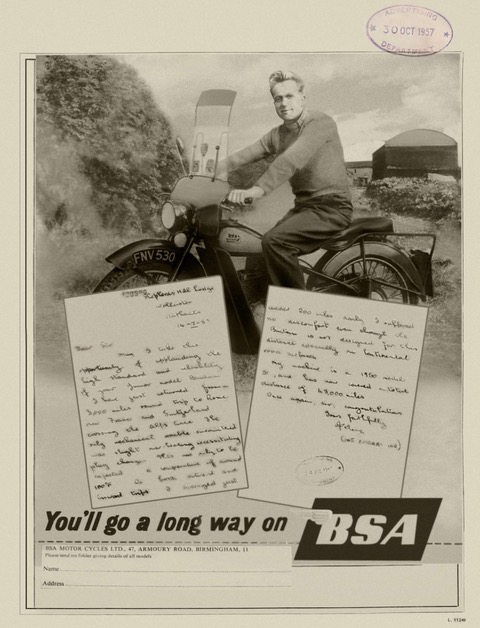
I applied for and was accepted into the Leicester City Police in February 1958. The day of joining was memorable for the wrong reason as that was the day of the 1958 Munich air crash involving the Manchester United football team.
I was sent off to the Mill Meece Group IV Training School in Staffordshire for three months and there met up with some “Colonial Police Force” guys who received the same training as us but were destined for exotic places like Hong Kong and Rhodesia, but I do not recall anyone in our intake heading for Bermuda.
Life in the City Force was quite different from what I had experienced in a County Force as a cadet especially as I was now subject to being accommodated in “digs” rather than living at home or being in armed forces quarters. Life as a single officer, however, had it’s moments of fun and interest and again sport played a large part of my off duty hours especially in the rugby season. That was when I met up with one John “Fred” Bailey who played for the Leicester County fifteen. There were two John Baileys in the force at that time so John, who later came to Bermuda, was referred to by his second name, and that is what I called him in Bermuda..
Two years probation was the norm for any new recruit before being considered for transfer to any other job outside of the city centre beat, but due to a lack of experienced officers in the suburbs I unfortunately, or fortunately, as the case may be was transferred out after one year. One cold morning in early spring on the ‘graveyard” shift of 6.00am to 2.00pm I set off on my pedal cycle to patrol the city boundary but about an hour later and still in the pitch black dark whilst negotiating a turning into a side street I failed to notice that black ice had formed in the road. Naturally in front of a bus stop full of factory workers my bike went one way, my helmet and cape another, and my dignity disappeared altogether in the middle of the road, accompanied by a large cheer from the crowd of onlookers who rushed to my aid. (I don’t think). That was probably the highlight of their rather dreary day. Back at the station house discussions naturally surfaced about the desire to work in a warmer place, but that would have to wait.
Not long after that incident however my work mate sharing the same digs decided to go back to the comparatively warmer climate of Bournemouth on the south coast and others talked of other faraway places. An advert in the Police Review pinned on the station notice board drew my attention so an application was sent off to the Crown Agents. A subsequent invitation was received to attend a medical at Harley Street, London, followed by an interview by one of the most objectionable characters I had ever meet even in my short police career. Every possible reason not to go to Bermuda was thrown at me by this gentleman which in fact made me more determined to pass the test, which I did and early July 1959 saw me packing my bags.
Fond farewells were made to the family with a promise not to return with a dusky maiden wearing a grass skirt, so little was known about Bermuda in our neighbourhood, except it was referred to as the “Millionaires Paradise”.
Flying out of Blackbushe airport on an Eagle Airways DC7 charter flight with a near record temperature of 92 degrees in London was quite an experience especially as we landed in Gander where it was near freezing and landed in Bermuda on 6th July 1959 also with a 92 degree temperature with matching humidity.
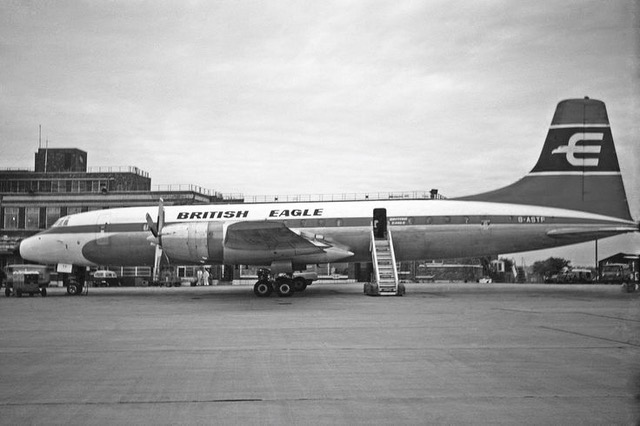
Our first night in Bermuda was a memorable one as there was a major fire at the Busy Bee at the corner of Court Street and Reid Street East and a four alarm fire called everyone out on duty, including the newly arrived recruits. The only exception being myself as I was completely exhausted by the journey and slept right through it.. Fortunately the volunteer fire brigade personnel did not have far to travel to extinguish the blaze as the fire station was at that time located in the yard and building on the opposite side of Reid Street now housing Government offices and the Supreme Court..
We were accommodated at the newly opened single men’s quarters at Prospect as Victoria Street barracks were being demolished to make way for the new City Hall and parking area, We were introduced to our quarters and the Police Club by Inspector Joe Nixon who advised that the bar in the club was the coolest place in Bermuda as air conditioning was a comparatively new introduction to Bermuda.
We were each assigned a “guide” to show us some of Bermuda and I was fortunate enough to meet up with “Bob” Railton who took me for a ride in a traffic department Sunbeam Talbot as far as Dockyard which at that time was being developed as a “Freeport” with a Canada Dry manufacturing unit and other enterprises.
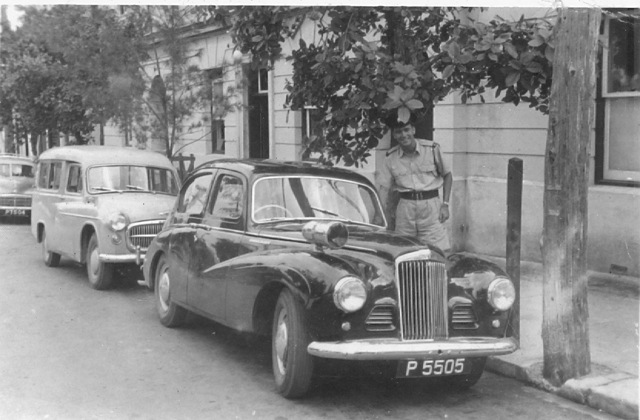
We had a few laughs with Bob as the favourite car at that time was a Morris Minor and Bob owned a black one with a number very similar to that of an identical car driven by the then Commissioner of Police. Bob was very happy to return the salutes of those younger officers who mistook the cars. Well 8133 and 8331 are very similar!
Assignment to the beat in Hamilton under the watchful eyes of Inspector Leslie Burge and Sergeants Arthur Rose and John Cribbin followed a short period of orientation in which we were handed a copy of the local laws with the suggestion that we read up on them during the long hot nights and “don’t fall asleep”.
This was also the time of the attacks on a number of residences on Cobbs Hill Road, referred to at that time as “Murder Mile”, mainly on ladies living alone, and officers were working twelve hour shifts building up many hours of overtime. Successful investigations and prosecutions soon ended that era. The reference to “Murder Mile” was stolen from the situation in Cyprus at that time and we were given first hand accounts of that situation by Clive Donald who joined us shortly after.
Summer uniform at the time consisted of khaki shirts and shorts which required regular washing and starching so coping with the heat and humidity was a constant battle.
The main beats to be patrolled at that time were Front Street East and West, Reid Street and Church Street, and due to a shortage of officers, streets to the north were usually only patrolled by the Duty Driver with either the Inspector or Sergeant. One very boring assignment was standing guard on the “Caicos Pioneer” a wooden cargo ship of dubious vintage which had been seized by the Provost Marshal, a position held by the Deputy Commissioner, and moored in Mills Creek. I am sure that no one had the intent or knowledge of how to steal the vessel, but a twenty four hour guard was required. Access to the location where the ship was moored was an adventure in itself. In the Summer 1959 Police Magazine there is a poem written by a bored officer dedicated to the “Caicos Pioneer”.
One major diversion from mundane beat patrols was the major dock strike in Hamilton only two months after my arrival, when after a few days of unrest and with the docks empty and at a standstill a handful of officers were issued with ex-army tin helmets, a wicker shield, and a long wooden baton and marched down Front Street behind Superintendent Percy Miller, to be met by an unruly mob of dockworkers supplemented by others all seemingly armed with an assortment of ugly weapons.
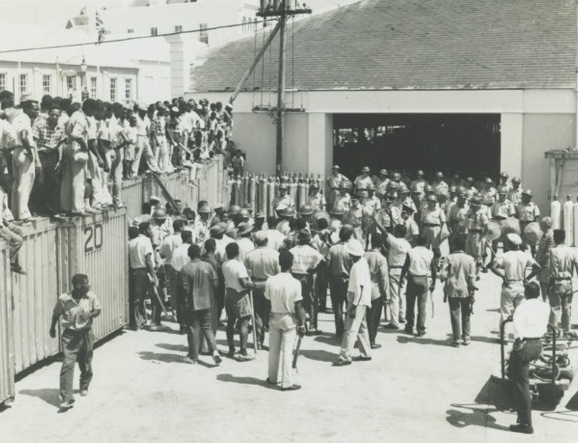
No formal training in the use of wicker shields and wooden batons had yet been organized, but as most of us were military trained we at least gave an indication that we knew what we were doing. Although I do not think that the wooden batons would have lasted long against some of the nasty looking swords and pieces of rebar that were apparent. Fortunately after being read the “Riot Act” by magistrate Ronnie Grey from the balcony of H A & E Smith's store, ably assisted by Inspector J C P Hanlon, the mob dispersed without serious incident, and also due to the efforts of longshoreman “Pork Chop” Mills.
After a few months in Hamilton and being elevated to the role of duty driver I was offered a transfer to the Traffic Department in November 1960. Having been subjected to the dangers of driving the Wyllis jeeps which developed a serious wobble at 20 mph the thought of being at the wheel of a Sunbeam Talbot and astride a single cylinder 500cc Triumph motor cycle was too much to refuse so the decision was easy.
This was at the end of the era of one character in charge of Traffic Inspector, John Marshall, who on his retirement was replaced by another character Inspector John “Tug” Wilson. (Why are men with the last name of Wilson nicknamed “Tug”?)
Prior to my transfer to Traffic however a more important milestone in my career occurred when I was married to the love of my life Anne Bindon,a local girl and part time model, who at that time was employed by Pan American Airways in Hamilton. Brian Malpas and Betty were married the same week, and I recall Ron Shelley saying in one of his communications that the highlight of his days on the beat was watching Anne and Betty walking down Front Street in their Pan Am uniforms. A sight not to be missed!
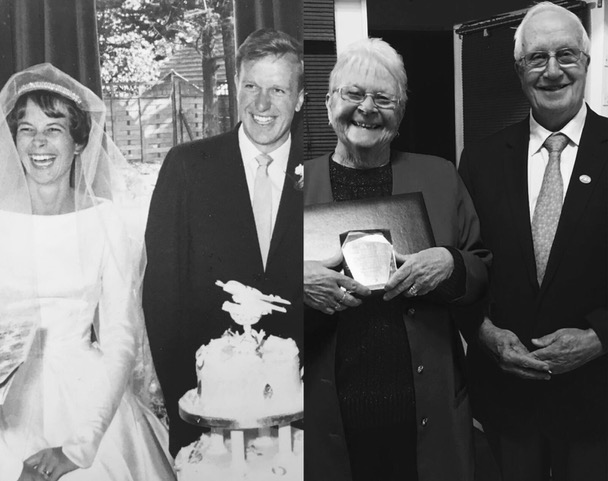
In Traffic I was paired with George Goddard, who incidentally also married a Pan Am girl, and at that time each crew was assigned a specific car and motor cycle which became a pride and joy as no one else was allowed to use them. That practice did not last very long as the Sunbeam Talbots and the Triumph 500s were coming to the end of their useful life and were replaced by smaller Riley 1500 and Triumph 350s. I think that the latter motor cycles formed the back bone of the very successful motor cycle display team.
One of the regular breaks from routine of attending the increasing number of accidents and chasing speeders prior to the advent of radar was all of the vehicles from Traffic being driven to the airport for speedometer calibration using a fifth wheel to ensure that when cases arrived at court the reporting officer could confirm that the speedo had been checked and was accurate. This check was carried out by Inspector Wilson and cars were driven down the airport runway, before the authorities decided that Kindley Field Road was a more appropriate location.
Routine traffic patrols were occasionally interspersed with arrests for drunk driving and minor crimes and the need to watch out for Naval personnel from both British and Canadian ships using any type of mechanical means to get back to base late at night having spent all of their shore leave in various bars. I recall one incident of a stolen bus being driven north on Court Street which leads onto Tills Hill at the bottom of which was the old TCD Examination Centre. The stone wall was not of sufficient strength to prevent the out of control bus finishing up in a very awkward place delaying TCD action until repairs were completed. I do not recall what happened to the driver. My co-drivers during that period were Alistair Johnson, Edgar Durrant, Lawrence Rawlins, Bill Pratt, and for a short time Michael “Budgie” Lohan.
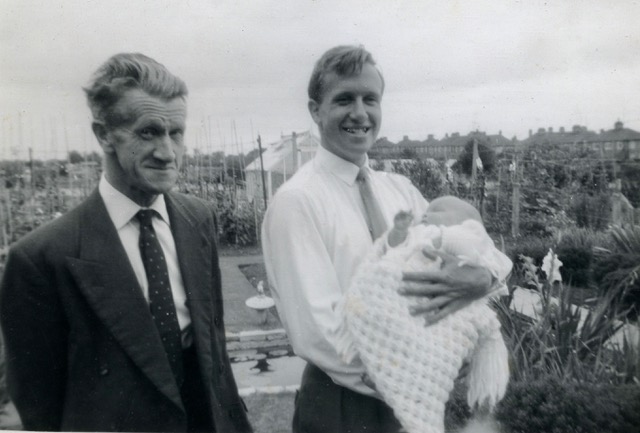
Off duty hours were spent as much as possible out of doors, at the beach, playing Rugby, and sailing, each in the appropriate season... The centre for the latter sport was Clarence Cove at Admiralty House which housed some of the single men and was also the venue for a number of parties. A number of us small boat owners located an old Navy anchor and decided it would make a good mooring so after a great deal of effort involving a number of brawny work mates it was placed in the middle of the bay ready for chain to be attached the next day. We returned the next day only to find that the anchor was no longer there. Subsequent enquiries revealed that Ian Davies had moved it by himself as he had tripped over it while swimming and considered it a hazard. What a character!
Looking for something a little larger, a group of us headed up by Des McSherry of later “Fletcher Christian” fame, located on old wooden 28 feet long sailboat in need of some fixing up. So many happy hours, and funds, were spent working on the boat at Mills Creek marina until it was ready for use and subsequently many happy hours were spent cruising around the Sound and North Shore. Hurricane Arlene sank her but more TLC extended her life until the syndicate disbanded.
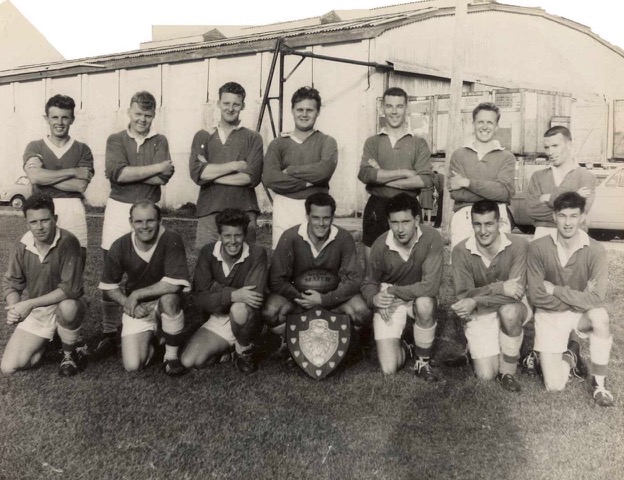
On the sporting side a broken collar bone kept me off the rugby field for a while, as well as keeping me off Heyls corner point duty, but I managed to play a number of games for the Police Team which had been officially formed in 1959. Later though when an influx of new recruits included a number of very good rugby players I had difficulty in maintaining a regular place in the 1st XV. So the obvious answer was to form a 2nd XV This idea had the blessing of Mr Frank Williams the Deputy Commissioner and chairman of the Rugby section, and a number of games were played mainly against visiting Royal Navy ships which provided some good opposition and gave a feeder to the 1st XV. This evolved into all four of the Rugby Clubs fielding 2nd XVs for a number of years. The official record indicates that I captained the Police 2nd XV for five years, but that needs to be checked somehow.
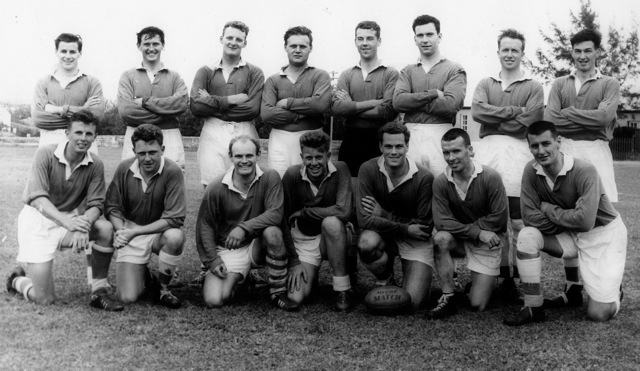
Another sport which I became very involved with was Squash, never having seen or played the gam in before finding the court near HQ at Prospect. There was a small group of local business men who played regularly and gradually enthusiasm grew until the Police Club joined forces and the Bermuda Squash Racquets Association was formed of which I became secretary. The game expanded in numbers and eventually courts were built adjacent to Nationals Sport Club in Devonshire on land donated by lawyer Bill Cox, and now the Squash Centre.
Although I do not recall doing anything too spectacular whilst in Hamilton or Traffic apart from many speeding cases, dealing with accidents and drunk drivers, stolen vehicles, a few arrests and one or two visits to Supreme Court to give evidence, but I must have been doing something right as late in 1963 after four years on the Force I was promoted to Sergeant, a short time before Clive Donald. At that time we were the youngest Sergeants on the Force until that recognition was taken up by Bill Smith.
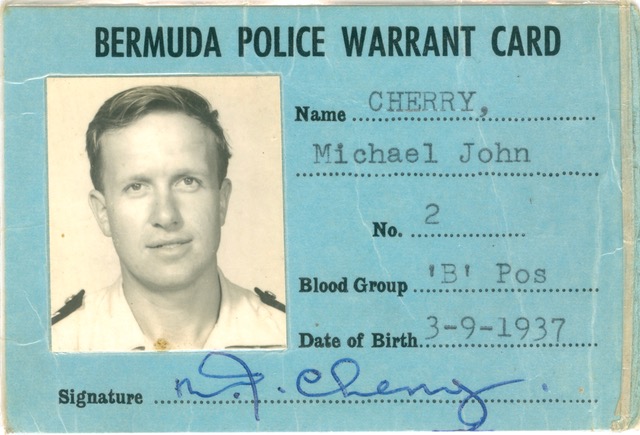
I do recall one significant arrest when on patrol with Alistair “Shakey’ Johnson was of Gerald “Beezer” Green, brother of the notorious Bobby Green, at Spanish Point Park. “Shakey” and I when appearing in Supreme Court were severely rebuked by the then Chief Justice Sir Myles Abbot as neither of us could remember which one of us told “Beezer” of his rights according to the Judges Rules. Not high on our list of priorities at the time.
After a short time in Traffic I was posted to Western Division as a watch sergeant in November 1963, and for a short time I was in charge of the Parish Constables. This was handy as Anne and I had bought a house in Somerset, which we lived in for many years and still own.
I had been the correspondent in Traffic for the Police Magazine which at that time was being published tri-annually and continued that role in Somerset, until George Garrod arrived to take over.
I continued to run the Rugby 2nd XV and we also took over the squash court at HMS Malabar, so had many games there against visiting Royal Navy ships, but as Somerset was relatively quiet at that time and appeared to be a “dead end” I unsuccessfully applied for overseas Driving Courses, with a request to go back to Traffic. As nothing in those areas transpired and nothing else of interest appeared to be happening I decided to resign and joined the airline business. I left the Police on 17th February 1968 after almost 9 years service. This move opened the way for me to enter another different phase of life in the Travel industry eventually becoming a co-owner of Watlington and Conyers shipping company, which had been in business since mid 1800, and is still in operation as a travel agency.
I remain in contact with some of my former colleagues and still enjoy keeping up through the ExPo website.
Anne and I were blessed with two children, a daughter Lesley and son Dennis, both of whom developed into accomplished athletes, which gave us the opportunity to travel to various parts of the world to support them. Lesley represented Bermuda in swimming in regional competitions before becoming a school teacher, and also running a very successful swim school. Dennis became an accomplished equestrian, representing Bermuda in three day eventing, until that became too expensive, so he took up Rugby, where he played for Teachers and also represented Bermuda.
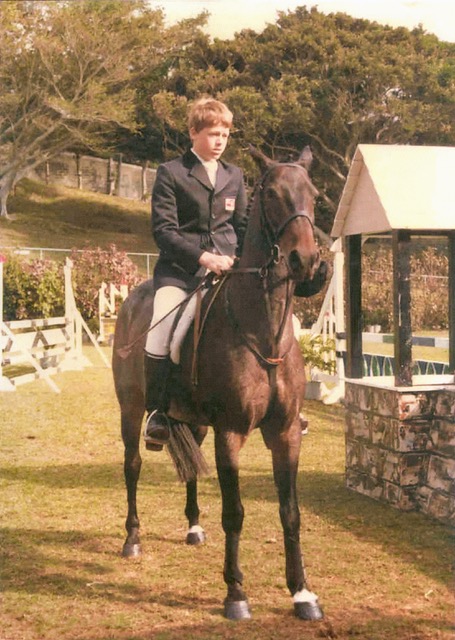
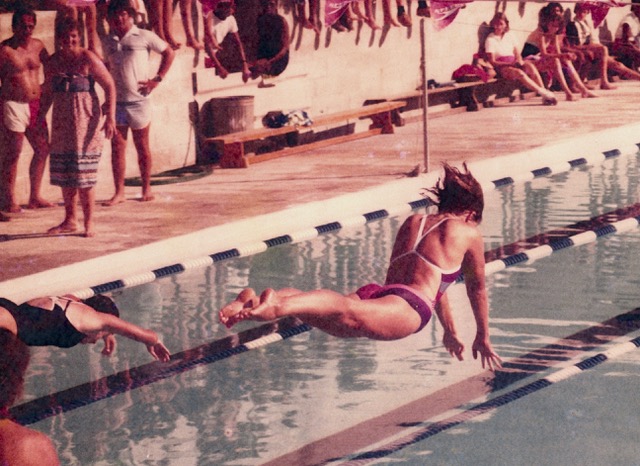
Our interest in sports led to various roles in administrative positions which has also given us the opportunity to travel and to keep us involved and active. After retiring from active participation in Rugby and Squash I got involved in technical and public relations in swimming, and equestrian events, inheriting this interest from our children, and eventually holding various positions within the Bermuda Olympic Association, where I still serve on the Technical Standards Committee. I also served for a number of years as President of the Bermuda Equestrian Federation, representing the Island at various meetings and events in many parts of the world.
Editors note - Not surprisingly, Mike was very low key about the sporting achievements of his children, and the tremendous volunteer work that he and Anne have devoted over many years to sporting and social activities in Bermuda.
Lesley has been an outstanding swimmer since an early age. She held several Bermuda swimming records and has represented the Island in a host of international competitions including the Caribbean and Central American Championships. Although now working as a teacher she still operates an excellent swimming programme, Aquamania at Warwick Academy Pool.
Dennis may not have been riding at the age of 18 months as his father did! He has, however, represented Bermuda at the highest level, and was chosen to represent Bermuda in the Olympic Games in 1988 and 1992, but on each occasion was unable to compete due to injuries to his horse.
Mike briefly mentions his involvement with the Bermuda Equestrian Federation but he actually held the position as President of the BEF for 20 years during which time he and Anne travelled all over the World including to the Olympic Games in Barcelona (1992) and Atlanta (1996) the World Equestrian Championships in Stockholm (1990) and The Hague (1994), the Pan American Games in Argentina (1995) and Canada (1999), and to events as far afield as Morroco, Kuala Lumpur, Qatar, Germany, London, San Francisco and elsewhere, Mike was also elected as Chairman of the FEI America's Group, the first time a non-American had ever been elected to the position. Not bad for a gentleman who has never really ridden a horse since he was a young boy on Shepherd's Hill Lodge Farm!
During his time in the Bermuda Police Force Mike was the Police Magazine correspondent for both Operations and Western. And through his involvement with squash he was Secretary of the Bermuda Squash Rackets Association when their new courts were being built next to Nationals Sports Club in Devonshire.
Any summary of the Cherry family's commitment to Bermuda would be incomplete without special mention of Anne's activities. Those of us who served in the Police Force in the 1960's will remember the time when Anne (nee Bindon), along with Betty Malpas both worked in the Pan Am office on Front Street, then at the airport when Pan Am was taken over by American. After leaving the airline business Anne worked for many years as Secretary for the Annual Agricultural Exhibition with Diane Saunders, wife of Hamilton "Sandy" Saunders who was a member of the Police Force. Anne worked at the Ag Show for 20 years until compulsory retirement from Government but continued to assist with the equestrian side of the Ag Show as a volunteer, and she continues to work for the new private partnership now responsible for running this popular annual event. Anne always had a great interest in swimming and used to compete at the old St. George's Hotel and Eagles Nest Pools, and performed water ballet at Belmont Hotel Pool. She later became a volunteer organizer with Harbour Amateur Swimming Club where she helped organizing swim meets, and also maintained all of Bermuda's National and Age Group records. She has been show secretary for the Bermuda Equestrian Association over many years, and her tireless voluntary work has been recognized with an Achievement Award at the Annual Government Sports Awards during the time of Sir John Swan being Premier, and an award in 2017 from the Association of National Sports Governing Bodies as a volunteer.
